Leave the Crowds in Bora Bora and Visit These 5 Secluded French Polynesian Islands Instead
When daydreaming about an escape to French Polynesia, many think first of Bora Bora, that green-and-blue blip on the radar in the Society Island chain made famous by honeymooners from all over the world. And yes, Bora Bora is a romantic’s dream come true, thanks to its eager-to-please luxury hotels and now-ubiquitous overwater bungalows, but French Polynesia is so much more than that.
I recently hopped a plane away from reality and straight to the middle of the Pacific Ocean, where I got a taste of what the region has to offer by visiting five of French Polynesia’s most distinct islands. Here’s a glimpse into what made each of the islands unforgettable — and a breakdown of the best spots for every type of traveler.
Related: The Best Islands in Australia, New Zealand, and the South Pacific

Rangiroa: For the Adventurous Traveler
Rangiroa, a 45-minute flight due northwest from Tahiti’s Fa'a'? International Airport, is an even smaller green dot on the map than Bora Bora, though it ranks as one of the largest atolls in the world. Its landscape is made up mostly of compact sandbars covered in coral.
Only two of Rangiroa’s motus (reef inlets covered in lush vegetation) are inhabited, meaning that less than 3,000 people permanently call the 558-square-miles of land home, which in turn makes you feel a bit like Gilligan and Ginger on your own deserted island (though really, it deserves more than a three-hour tour).
Upon arriving in Rangiroa I found out there’s only one thing you must do: Find a local, get on their boat, and go diving.
When we arrived, my travel partner and I stripped off our bags, our clothes, and our jet lag and strapped on a scuba tank at the Top Dive shop inside the Kia Ora Hotel. After a crash course in diving, we set out for an area known as the “Aquarium.”

Lurking below the surface are massive schools of fish and some fairly sizable black-tip reef sharks looking for a tasty morsel. At the Aquarium, locals and tourists gather from sun up to sun down to sit on their boats, play a little music, dive into the water, and share a laugh as a shark or two swim up for a visit.
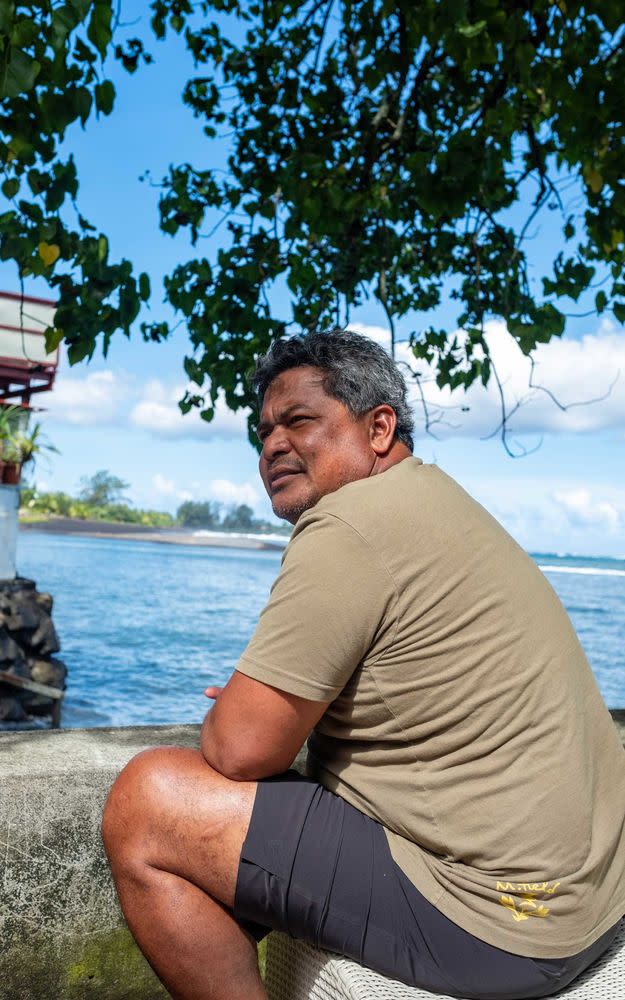
The next morning, we rose with the sun for a day-long trek to a place known as Reef Island. We were picked up by an ageless man named Mana and told to get in the back of his truck with a few other would-be Jacque Cousteaus, and then whisked away by boat to Reef Island, an islet about an hour ride away. After crossing the lagoon, Reef Island emerged, an oasis that seemed so untouched we truly felt like we were the first to ever set foot on it (we, of course, were not).
There, we snorkeled, explored, ate a lunch of freshly caught fish and breadfruit plucked right from the tree, and mingled with the reef sharks dotting the shoreline before riding back at sunset.
How to get there: Fly Air Tahiti Nui
Where to stay: Kia Ora Resort and Spa (starting at $579 a night)
What to do: Reef Island Tour ($135 per person)
Raiatea: For the History Buffs
On day three, we jetted off to Raiatea, the first land inhabited by ancient Polynesians. Upon exiting the doors of Raiatea’s airport, we were delighted by vendors selling freshly cut coconuts, plump pineapples, and sweet-smelling vanilla as far as the eye could see.
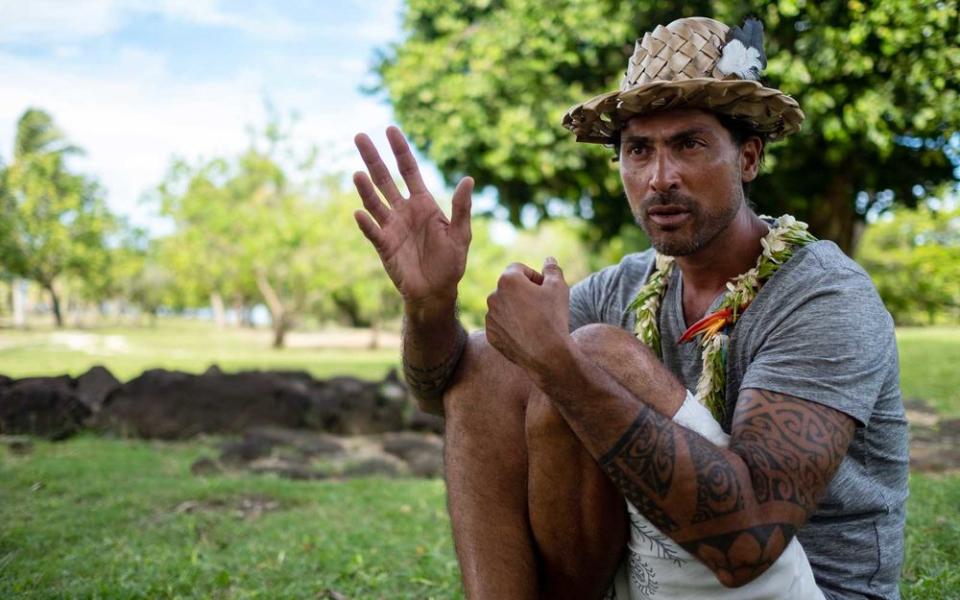
Our guide for the day was yet another Polynesian who had drunk from the fountain of youth — Yoram Pariente, the owner and operator of Polynesian Escapes Tahirarii. He, like Mana, swooped us up in his truck to take us on a day-long journey, though this time it included a crash course in Polynesian history.
Yoram spoke with an unabating passion about the history of French Polynesia, and really, there’s no one better to learn from: Before returning to the island to run his company, Yoram spent time living in places like England and Scotland, where he preserved and reconstructed Polynesian artifacts for some of the most prominent museums in the world.
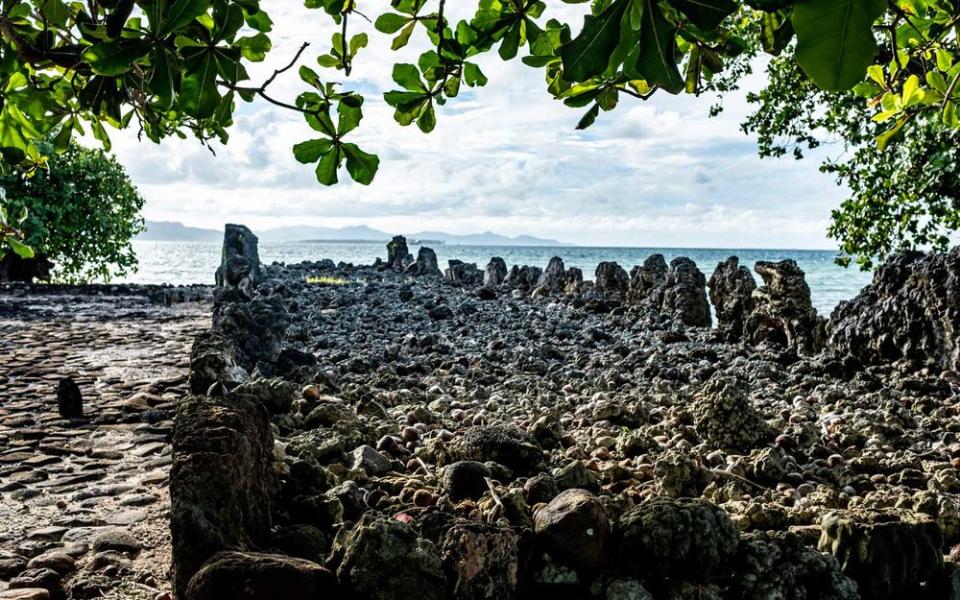
On the island, he drove us to a few of his favorite destinations, including the Taputapuatea marae UNESCO site. While sitting in the grass, he explained that Polynesians first set out into the oceans from this exact spot to explore what was beyond the horizon, eventually finding the islands of Hawaii, more than 1,000 years ago. All of Tahitian history, he noted, is passed down as an oral tradition. There are no early written documents, but through song, dance, and a common bond with other Pacific islanders — along with dedicated people like Yoram — the history is preserved well.
At the end of our time together, Yoram dropped us off on yet another boat, this time a taxi, which would take us to our next excursion. He even stayed and waved until we could no longer see him.
How to get there: Fly Air Tahiti Nui
Where to stay: Opoa Beach Hotel
What to do: Tour with Polynesian Escapes Tahirarii

Taha’a: For the Wellness Traveler
The only way to get to Taha’a is by boat, and that boat also only docks at the end of a restaurant. If you can pass through without ordering a meal, then bless your soul because it smells too good to be true. But we were on a mission, so we swiftly exited to get to our next hotel destination: Le Taha’a Island Resort and Spa.
What we learned almost immediately is that there really isn’t anything to do on Taha’a island, except sit back, relax, and enjoy the view of Bora Bora just a few miles away. And there’s no better place to do it than right from the end of the hotel’s overwater bungalows. Be ambitious and get up with the sun, and you’ll be handsomely rewarded with a sky that turns a mixed shade of burnt orange, red, and pink that you didn’t even know was possible.
Of course, if you’re really ambitious, you can also book a Tahiti Air Charter flight like we did, which will pick you up at the end of the hotel’s dock and take you away on a stunning 10-minute flight over Bora Bora.
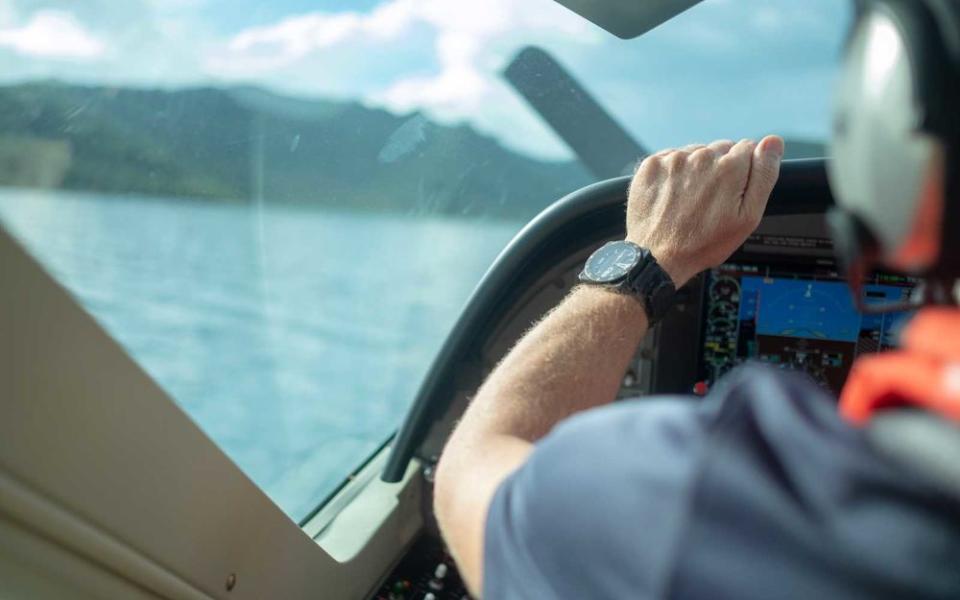
The plane is about the size of a car, so it’s certainly not for the faint of heart, but on our return trip, we spotted what we thought was a mirage: a massive, angelic manta ray floating under the clear blue water below. Watching it drift and flap its wings made us feel like we were in a Disney movie — and made the turbulent water landing well worth it.
When we returned, the hotel invited us to take a sunset glide down its own lazy river. The hotel is built along a small inlet, which is covered from side to side with a coral reef. The natural tide makes it the ideal destination to walk to the end, hop in, and float right back to your room. That’s how relaxing this island really is. You don’t even need to swim. And, because of its location, it’s like you’re getting the Bora Bora experience, minus the crowds and still teeming with marine life below.
How to get there: Fly Air Tahiti Nui
Where to stay: Le Taha’a Island Resort and Spa
What to do: Take a Tahiti Air Charter
Moorea: For the Culture-seeker
After experiencing true zen on Taha’a, it was time to jump back into Polynesian action mode, and Moorea delivered.
Unlike Rangiroa’s flat and long landscape, Moorea’s mountains feel powerful and looming as they pierce through the clouds above.
Following a flight and ferry to Moorea, we met with Sam, a Polynesian with a story to tell.
Sam, the owner of Moorea Maori Tours, offers an experience called “My Polynesian Life,” which is what we opted for as we wanted to see what a local's daily life was really like there. And Sam, with his traditional tattoos from forehead to fingertip, was just the man for the job.
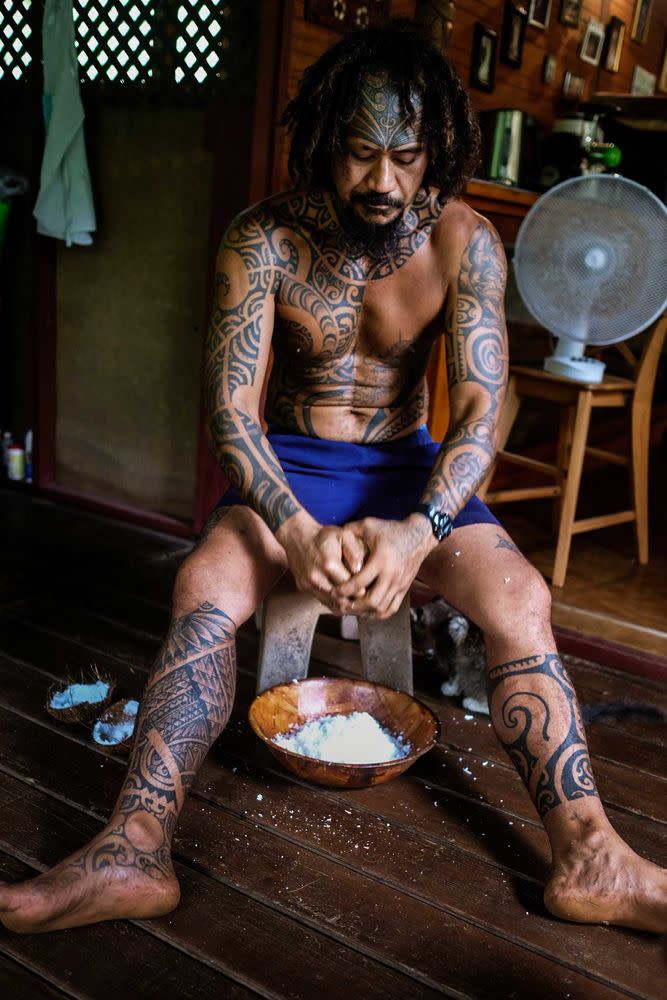
After a quick car ride out of the tourist zone, Sam told us to leave our things behind. We then walked to the water’s edge and found an outrigger canoe with an awaiting captain who couldn’t have been more than 17 years old. Sam told us we had to go catch our own fish that day just as Polynesians have done for centuries. So off we went, with our friendly teenage guide, to a reef about 10 minutes out. We anchored and dove in to try our hand at spearfishing. Spoiler alert: The Polynesians are far, far better at this than we were. But we managed to bring back a few parrot fish (and what was left of our pride) when we once again met Sam on the shore.
Salty, muddy, and pleased with our haul, Sam took us to his personal home, which was nothing short of a utopia. There, hidden among the lush greenery of Moorea, sat a miniature plantation filled with coconut trees, a fruit and vegetable garden to rival Martha Stewart’s, and a roly-poly pit bull who looked more like a chubby bear cub than a dog.
At the house, Sam introduced us to his wife, Sylvie, a French expat with new Tahitian tattoos to match. She was waiting for us in the family’s outdoor kitchen, where she would help us prepare our catch. At the house, Sam walked us through how to harvest and prep coconut meat and coconut milk for our appetizer, Poisson Cru, a scrumptious meal made of raw tuna, coconut milk, lime, and cucumber. We paired that with a bit of breadfruit, rice, and our freshly seared parrot fish and sat down at their table to learn more about Sam’s story.
He walked us through his origins and how he can trace his ancestral roots for hundreds of years. He pointed out each tattoo stretching down his body, showing how every single one had special meaning connecting back to Moorea. He talked about the ups and downs experienced by Polynesians once the French missionaries arrived. Before long, Sam's strong connection to his home had us supremely jealous that Moorea wasn't our home, too.
How to get there: Fly Air Tahiti Nui or take the ferry from Tahiti to Moorea
Where to stay: Sofitel Moorea
What to do: Spend a day with Sam on Moorea Maori Tours

Tahiti: For the Adrenaline Junkies
Something that’s often overlooked when visiting French Polynesia is Tahiti itself. It’s used more as a launching pad than a destination, but travelers are making a crucial error by not spending at least a day exploring what the island has to offer.
And, as a lifelong surfer, I knew there was one thing I had to do while I was there: feel the power of Teahupoo.
For the uninitiated, Teahupoo is regarded as one of the best surf breaks in the world. It’s also one of the most dangerous. Before getting up close and personal with the waves, we first met up with a true legend of both Tahiti and the surfing community, Raimana Van Bastolaer.
Raimana has helped some of the world’s most famous people see the massive waves. Raimana told us he recently took Cindy Crawford and her family out for a boat ride and has sailed around the islands with his personal friend, Julia Roberts.
And really, it’s easy to see why people flock to him. Within 10 minutes of meeting him, he set up a Jet Ski to send us out to the break and said goodbye with a hug and an “I love you.”
We hopped on the back of the Jet Ski and said hello to our driver. “Hold on tight,” he replied.
Within a few minutes, we were there, just a few feet away from the world’s heaviest wave. Because of the way the waves breaks into a bowl, viewers can sit on the edge as the waves continue to crash below. But the sprayback from the wave was a powerful reminder of just how close we were to peril.
We sat with the gathering locals and watched as surfer after surfer paddled in. Together, we cheered for the ones who made it and waited with baited breath for the others to return to the surface.
After an hour or so we returned to shore, drove to the airport, and boarded our plane back to our day-to-day lives. What we were left with from our trip was a sense of renewal, a sincere appreciation for a culture that puts its people’s happiness and wellbeing over everything else, and a new love of both reef sharks and raw tuna drowned in coconut milk.
How to get there: Ferry back to Tahiti or Fly Air Tahiti Nui
Where to stay: Intercontinental Tahiti
What to do: Tour Teahupoo with Teahupoo Surfari
So go to French Polynesia, just make sure to stay long enough for it to sink deep into your heart. That way, you can at least escape back there in a daydream any time you want.